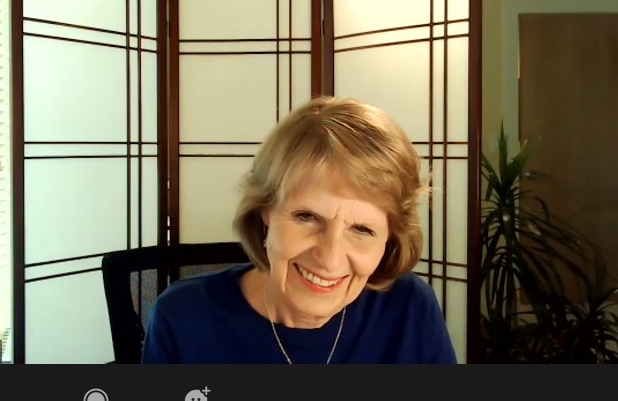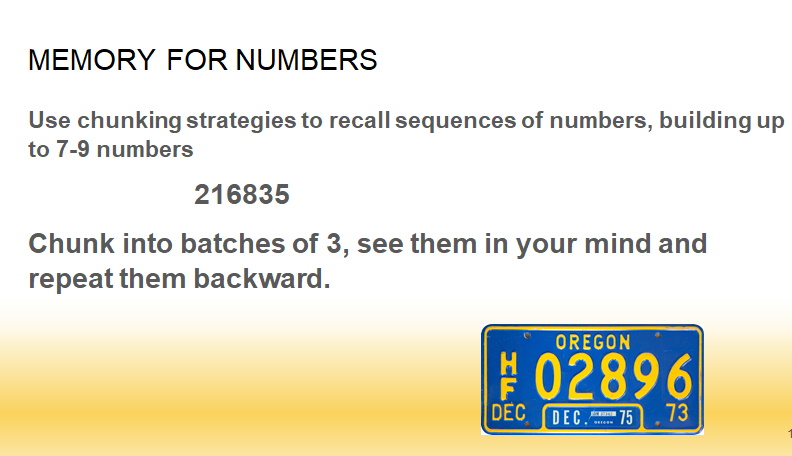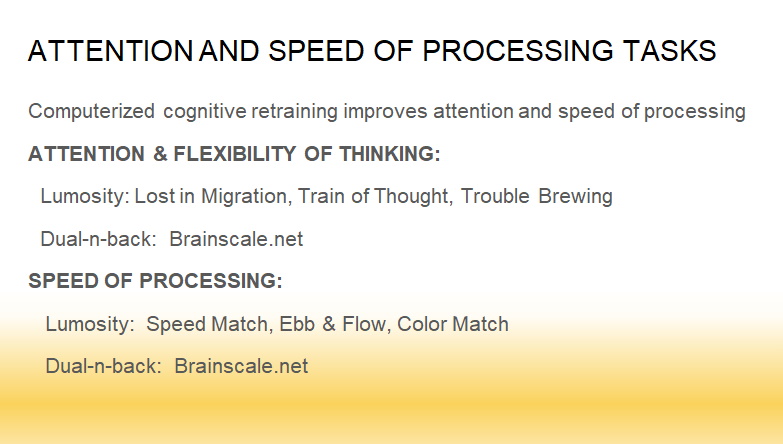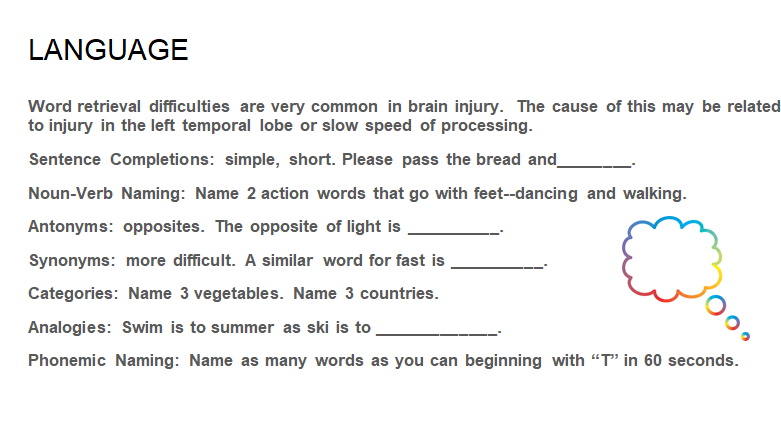
Brain Injury Hope Foundation co-founder Dr. Mary Ann Keatley says memory can sometimes be restored in mTBI survivors with a little work and dedication to therapy. “It can be five minutes a few times a week,” she said of therapy.
Memory Can Be Repaired, Even Years After a TBI
By Eliza Marie Somers
Memory issues are a constant complaint of mTBI survivors, and it’s especially vexing for people who suffered brain injuries years ago. However, new research reveals you CAN strengthen your memory with a just few exercises a week.
Dr. Mary Ann Keatley, co-founder of the Brain Injury Hope Foundation, conveyed this ray of hope to traumatic brain injury survivors at the March 2021 Survivor Series via Zoom.
“In ‘Mozart’s Brain and The Fighter Pilot’ by Dr. Richard Restak, he states there are over 100 billion nerve cells, and million to billions of synapses, “ Keatley explained. “Some of those connections can be accessible with therapy. Those connects can be reacquired. … There are work-arounds.”
It’s a concept called neuroplasticity, and it’s the brain’s ability to change and adapt to new information.
Keatley said memory is a biochemical processes that comes together for a dynamic phenomenon, and it’s essential, especially for mTBI survivors to function at home and if they are able to return to work.
“Memory helps with critical thinking skills, and helps you process information to make appropriate decisions,” she said.
The Basics
First what is memory? It’s the capacity to store and to retrieve information; and there are many different types of memory. The three primary types Keatley focused on during the Survivor Series were long-term memory, short-term memory and working memory.
- Long-Term Memory: Storage of information over extended periods, from a few moments to decades later.
- Short-term Memory: Brief, lasting 15-30 seconds, with a recall of about seven items (plus or minus two). It is information that is stored temporarily, and then either dismissed of transferred to long-term memory.
- Working Memory: Is a short-term memory system to store and process current information to use quickly and then discard. Such as remembering where you parked your car. A Johns Hopkins University video described working memory as “your brain’s virtual sticky note. It holds temporary information you need to make decisions.”
After a brain injury cognitive issues may arise, including problems with memory, attention span, speed of processing, reasoning and decision making, language, executive function, etc. Some of these cognitive issues can directly affect memory. An example is if your speed of processing is slow, then it will take longer to “encode” a memory.
Retraining the Brain
Keatley gave a demonstration of various exercises, techniques and games a person can do to help rewire the brain. The most impactful “game” is Dual-N-Back on brainscale.net. In an NPR article, reporter John Hamilton discovered that Dual-N-Back was effective in improving memory, citing a study by The Henry M. Jackson Foundation for the Advancement of Military Medicine. The article also includes a video sample of Dual-N-Back.
NOTE: Dual-N-Back features flashing squares, so if you are prone to discomfort by these stimuli, this might not be a therapy for you.

If you don’t have access to a computer, you can improve your memory with pencil and paper exercises. In this example, “encode” the two pictures by creating a story such as: I lost my ring while fishing to associate the fish and ring. I kicked the cobweb with my sneaker, or the hummingbird’s is tiny like a copper penny.
Then after a few minutes try to recall what object the fish goes with, or what object goes with the sneaker. You get the picture.
Another strategy Keatley uses with her clients is categorical memory strategy. This is when you group items together to remember them. Memorizing poetry or short stories is another tactic that can improve memory, she said.
When it comes to numbers, try grouping them in threes, a strategy known as chunking. By recalling groups of numbers forward and backward, this can help your memory.

Speed of Processing, Attention, Language and Visual Problems
Simply put speed of processing is how fast you take in information, make sense of it and use it. This information can be visual or auditory. If you cannot process information, you cannot encode it into memory.
To increase speed of processing and attention, Keatley cited Dual-N-Back and Lumosity games, including Lost in Migration, Train of Thought, Speed Match and Color Match.

Recalling words is a common problem many TBI survivors experience. Some tasks to help with language skills include naming as many words as you can that begin with the letter “T” in 60 seconds. (A good score is 12-16 words). Writing down antonyms (opposite) and synonyms (similar) of words, such as the opposite of up is DOWN; a word similar to up is ABOVE. And these are games you can do with a friend or by yourself.
Visual issues also play a part in memory. If your eyes are not tracking properly, are converging or are diverging incorrectly, it makes it harder to process information. The May 14, 2021, Survivor Series will feature a panel of Visual Therapists. To register for the Zoom Event visit www.BrainInjuryHopeFoundation.org.
While you are working on improving your memory, don’t be shy about using devices to help you remember things. There are numerous apps available that can help, including Daily Notes, Break Time, Nameorize.
“I’ve looked at a lot of literature, and deficits in memory, attention, speed of processing, executive function – planning, organizing – can last a long, long time,” Keatley said. “But the most important thing to know is that you CAN improve even years after an injury. Learning new things can enhance cognitive skills.
“You may be able to improve your memory with therapy. Absolutely,” she continued. “Yes, you can get quite dramatic results. … People can correct a lot of issues if they work on them.” And there are many workarounds such as electronic apps to help you.
BIHF Vice President Joanne Cohen, who facilitated the Survivor Series, stated, “It’s never too late to work with someone. It was 18 years after my injury that I started working with Mary Ann. People will tell you, you can’t do this or that. Don’t believe the naysayers.”
“Whether you think you can, or you think you can’t – you’re right.” – Henry Ford


